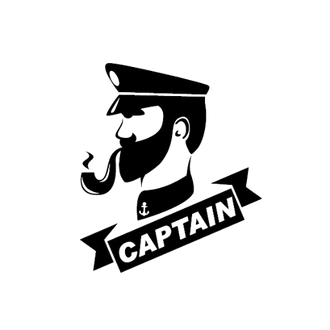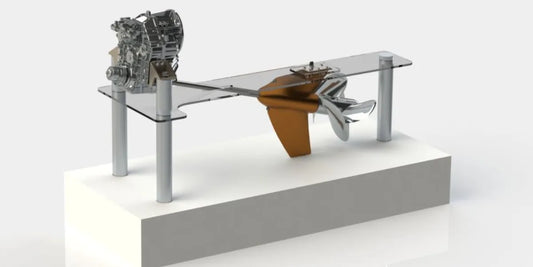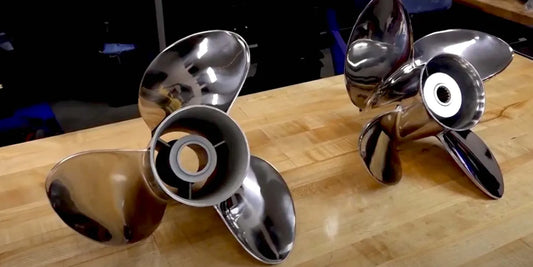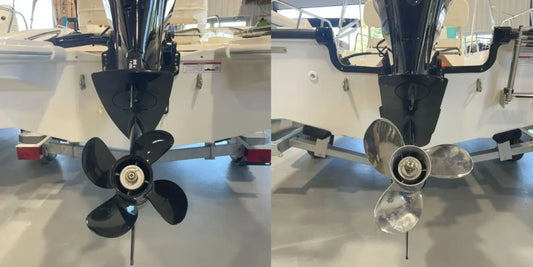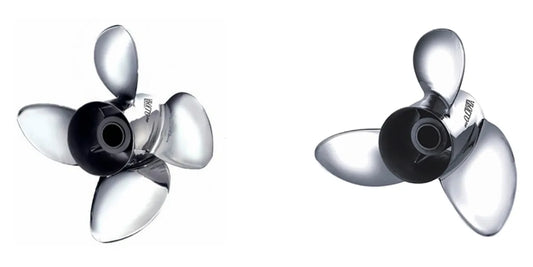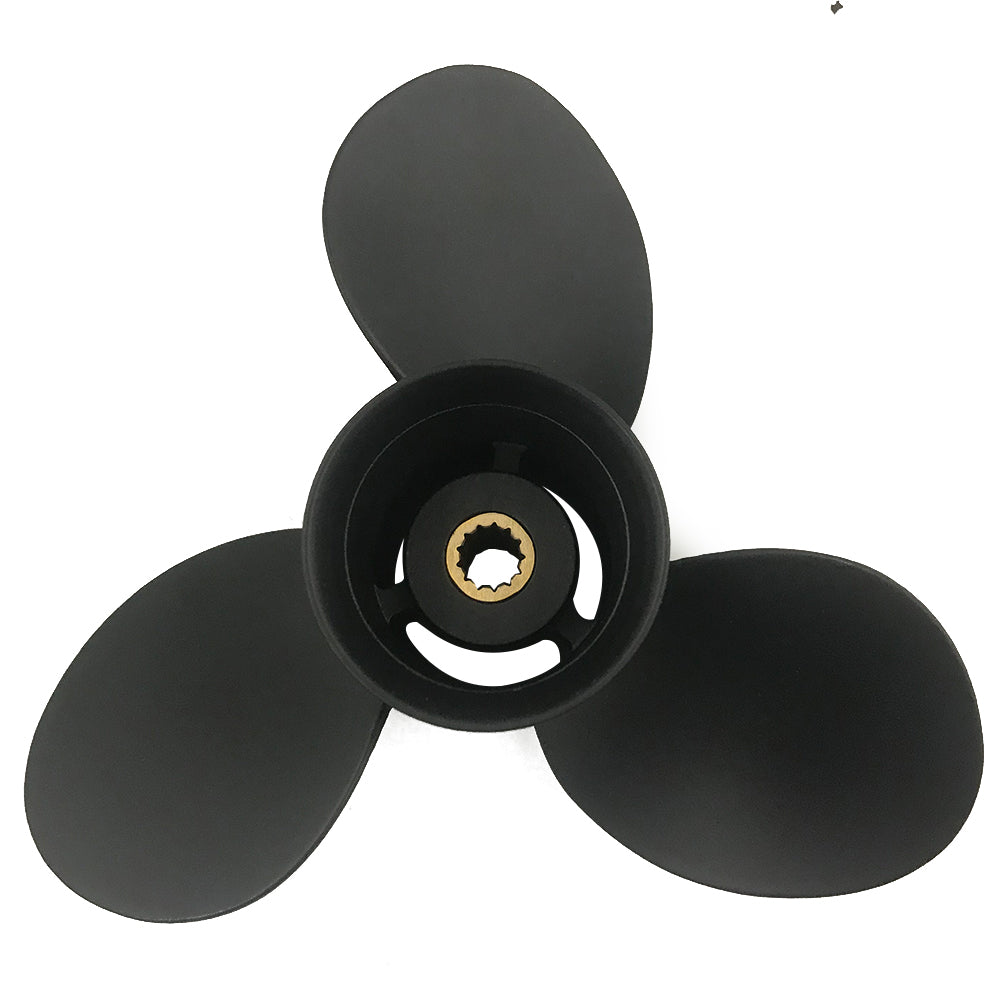Choosing the appropriate propellers for a vessel can be crucial in enhancing the vessel's actual performance and fuel economy. From 2-blade to 4-blade types, every design offers different benefits and trade-offs that you need to be aware of to select the one best suited for you. So, whenever speed, stability, or sheer power enters the mind, by choosing anything from the range of available propellers, you essentially make a trade-off with your vessel's performance. This article will guide you through the differences between 2-blade, 3-blade, and 4-blade propellers, highlighting their advantages and helping you make an informed decision. By the end of this article, you will have learned how to work with this insight to decide which propeller best fits your particular boating style and conditions.
Understanding Propeller Blades

What Is a Blade Propeller?
The blade propeller is the most critical component of a boat's propulsion system, converting the rotational energy provided by the boat engine into thrust, which moves the vessel through the water. In practice, a propeller has several blades that are positioned at an angle, allowing lift to be generated behind them, similar to an airplane wing, which pushes the water backward and propels the boat forward. The number of blades, as well as their shape and size, significantly impact the propeller's functionality. Speed, stability, and fuel economy are all finely tuned to the blade design and configuration.
There are the commonly used operations: 2-blade, 3-blade, and 4-blade. Each has its advantages, very much dependent on one's boating needs. For example, two-blade propellers are suitable for lightweight, high-speed craft, as they generate less drag. Three-blade propellers tend to maintain the speed-fuel efficiency balance, which is why they are common within recreational boats. Four-blade propellers provide greater stability and smoothness to the ride, especially in choppy waters or when the ship requires more precise handling. Thus, blade number preference depends primarily on one's intended usage, expected performance characteristics, and environmental considerations.
Modern blade propellers are made of high-tech materials, including stainless steel or aluminum, with coatings that enhance wear and corrosion resistance. And then, for ultimate performance requirements, there are options for adjustable pitch or special blade designs optimized for specific speed and load conditions. Understanding the dynamics of blade propeller design enables one to optimize boat performance, ensuring the boat operates efficiently and reliably under various conditions.
Types of Propeller Blades: 2, 3, and 4-blade.
More blades mean the propeller becomes more thrust-intensive, with better speed and fuel range.
2-Blade Propellers, featuring simplistic yet highly efficient designs, are primarily used in circumstances that require low drag and high maximum speeds, such as lightweight boats or racing boats. Since they resist water motion less than other propellers, they achieve optimized fuel economy and smoother operations; however, with multiblade systems, these propellers tend to vibrate slightly more than those systems. Listen, it's all about the feeling.
3-Blade Propellers strike a profitable balance between speed and power and are the propellers of choice for many recreational and some commercial applications. The additional blade provides more thrust and improved handling, with minimal loss of speed. Additionally, vibration from the 3-blade propeller is reduced, making it suitable for operating medium-sized boats in various conditions.
4-Blade Propellers, which excel in torque, stability, and load handling, make the perfect choice for larger vessels or boats operating in rough waters. With its increased blade area, this propeller delivers excellent acceleration and grip, making it suitable for towing or handling heavy loads. Although it may reduce the finishing speed, the finishing speed is increased knob-wise. And there's the smooth ride and the quieter one.
The proper blade configuration depends on the specific circumstances of your boat, such as its weight and engine horsepower, as well as typical working conditions.
Performance Effects Due to Blade Count
Performance is directly affected by the number of blades on a propeller, which influences the level of thrust, efficiency, and handling capabilities provided to the boat. Two or three blades on the propeller usually produce less drag, allowing a ship to reach its top speed and improve fuel efficiency. This type of setup would likely work well for lighter boats or in scenarios where maximum speed is the primary objective.
More blades, however, through their increased surface area on the water, will provide more thrust and stability for a heavier boat or in choppy waters. More blades also improve acceleration and sea distance, as well as smooth operation under heavy loads.
For instance, statistics indicate that a four-blade propeller outperforms a three-blade propeller during acceleration by 10 to 20 percent, while also offering a quieter and smoother ride. Of course, it comes at the expense of top-end speed, so it would be wise to consider which factor is most important to you when determining the preferred blade count: speed, stability, or efficiency.
3-Blade vs 4-Blade Propeller: Key Differences

Advantages of 3-Blade Propellers
Commonly viewed as the Swiss Army Knife of propellers, 3-blade propellers stand perfectly balanced in terms of speed, power, and efficiency, hence making them versatile for the broadest array of applications in boating. A key feature of this design is that it enables a higher top-end speed than its 4-blade counterpart. It has a water surface contact less than that of a 4-blade propeller; hence, more drag is reduced on the prop, allowing the engine to maintain a high RPM. This characteristic makes it an ideal prop for speed-oriented activities, such as water skiing, racing, or any situation where acceleration and speed are crucial.
Advantages of 3-blade propellers include their lower cost. They are comparatively straightforward in design, which suggests lower manufacturing costs. They serve as a cost-effective option for boat owners. They also tend to be less heavy, a characteristic that improves fuel efficiency during long-distance cruising. The lighter weight subjects the engine to less strain, which can prolong the engine's life span if properly maintained.
Another aspect that makes 3-blade propellers a preferred choice in varying water conditions is their strong performance record. They perform well in calm water, where reduced drag can be an advantage, but they also offer some flexibility in navigating somewhat choppy water without losing much efficiency in the process. This double-edged balance of speed and adaptability makes them an everyday go-to for recreational users who want one prop for all needs rather than investing in specialized gear for separate uses.
Advantages of 4-Blade Propellers
Number 4 in the blade count brings with it a host of advantages that equip it well for a variety of boating activities. Water grip enhances muscle, adding to its profile of stability and handling attributes, precisely so that it maintains good performance in adverse or turbulent water conditions. Thrust-over short of sudden picks are crucial for quick control in sharp turns and strict environmental settings. A longer amplification brings forth a low-speed push, enhancing water skiing, wakeboarding, or hauling loads —the need for precision and smooth acceleration in this enhanced low-speed activity.
Also mentioned as fuel-efficient, and the converse of the 3-blade design, this configuration applies to specific operating conditions, such as cruising speed. It favors a smoother release of the engine power, easing the strain on and optimizing the performance of the motor. Some savings on fuel over the years are a perfect incentive to go for these. A further remark is the decreased chances of vibrations and noise compared to 3-blade counterparts. Lower noise adds to the fun boating experience and decreases disturbances to the environment--appealing to an exciting day on water or eco-conscious ones.
Another significant advantage of 4-blade propellers is their strength and adaptability to numerous engine settings and boating requirements. They are capable of handling heavy boats, such as pontoons or fishing vessels, where 4-blade propellers typically provide a more consistent delivery of power and torque compared to 3-blade propellers. These versatile qualities also include compatibility with modern advancements in marine technology, such as optimized designs that maximize thrust and minimize cavitation under specific conditions. Overall, stability, fuel efficiency, lower noise, and broad adaptability combine to make 4-blade propellers a trusted improvement candidate, whether for leisure or commercial engagements.
Which is Better for Your Needs: 3 or 4 Blades?
Choosing between three or four blades on your propeller will strongly depend on your specific boating needs and the type of vessel on which to mount it. Typically, the 3-blade propeller is preferred for high speeds and reduced drag. It is best suited for speedboats or ships that primarily engage in recreational activities, where utmost visibility is prioritized over top speed and acceleration. Moreover, three blades reduce the amount of surface area resisting motion through water; thus, they usually produce better fuel economy at high speeds.
Conversely, the 4-blade propeller offers a more precise low-speed response, improved stability in choppy waters, and enhanced towing or pulling efficiency. These are somewhat heavier blades that attract force over larger extents, especially favorable under heavier loads, such as those found in boats, including cruisers and commercial crafts. Besides providing smoother operation with reduced vibration, a firm grip usually results in enhanced overall control and improved comfort during navigation.
Hull design, engine power, and load capacity are all contextual factors that can either increase or decrease the efficiency each offers. Research on marine performance often reveals that three-blade propellers excel at reducing drag in light and agile boats. In contrast, four-blade propellers tend to perform better in situations where lasting performance, steady torque, and assured maneuverability are crucial. Ultimately, weighing the priorities of speed, endurance, fuel efficiency, or uptime will help you determine what will work best for your boating adventure.
Efficiency Considerations in Bladed Propellers

Fuel Efficiency: 3-Blade vs 4-Blade
Considering fuel efficiency, 3-blade and 4-blade propellers offer design and performance characteristics that yield specific advantages under certain operational conditions of the vessel. It is that 3-blade propellers would produce less drag and perhaps achieve greater fuel efficiency at higher speeds, thereby being crop-rated for boats where speed of transit across open waters with a lighter load is the primary consideration. As such, less resistance is encountered at high operational speeds, fuel-wise.
On the contrary, 4-blade propellers offer a significantly larger power surface area and have a thrust force that works well under heavier loads or during low-speed cruising. This thrust efficiency translates into effective fuel consumption management, enabling a critical speed for towing or carrying an extra load, or navigating through turbulent waters. Whilst the fuel economy may never reach high speeds with a 3-blade, the 4-blades offer smooth and consistent torque, consequently resulting in a more predictable fuel consumption during big-time maneuvers or through demanding conditions.
The choice comes down to the nature of work to be undertaken in the water. Boats designed for speed and lightweight construction will often opt for the 3-blade propeller, whereas those seeking ruggedness, control, and balanced fuel consumption under varying conditions will typically choose the tried and true 4-blade propeller.
Speed and Maneuverability of Different Bladed Designs
The top speed and maneuverability of different-bladed propeller designs could be truly considered on a dancing surface of factors that include blade count, pitch, and diameter. Professor Erkaev states that a 3-blade propeller can outperform a 4-blade propeller in achieving top-end cruising speed simply because it is lighter in overall design and creates less drag through the water. This justifies the popularity of 3 blades for water skiing and racing, where speed is everything.
The 4-blade propeller stands out for its handling and smooth operation, providing perhaps more thrust in rough waters and during tight turning maneuvers. This balanced thrust benefits boats used for fishing, towing, or docking to a great extent. Studies have shown, and practical experience proves, that 3-blade propellers have a higher gross speed, but 4-blade propellers produce improved acceleration, increased mid-range performance, decreased slippage, and enhanced steady control under challenging situations.
Choosing the proper type of propeller will depend on the vessel's intended use. 3-blade propellers are the standard for high-speed performance and agility. However, the 4-blade ones are practically unbeatable for those on the hunt for steady power and control throughout variable conditions.
Noise Levels: Comparing 3 and 4 Blade Propellers
Noise levels are a crucial consideration, and the acoustic emissions from 3-blade and 4-blade propellers depend primarily on their structural characteristics. More often than not, 3-blade propellers would become louder since they rotate faster and generate less surface area. This turn creates vibrations and sounds that are noticeable, especially if he/she is aboard a relatively small vessel.
4-blades, however, are designed with load-sharing across the additional blade, thereby reducing vibration and noise during operation. Their larger surface area provides steadier thrust, resulting in enhanced stability and reduced noise. This, therefore, earns the 4-blade great popularity among users who want silence from their machines, especially when leisure cruising or in an environment where emergency noise is considered unacceptable.
Furthermore, noise abatement is a factor influenced by material choice, as well as by pitch and the engine location in the hull. For instance, stainless steel propellers typically produce less noise than aluminum ones since the former are more rigid and flex less when in use. Whether the interest is in total silence or to strike a balance between performance and an acceptable level of noise, it is essential to consider the finer points of design to make a decision that fits particular needs.
Specialized Propeller Types

Talking About Folding Propellers: Pros and Cons
Folding propellers are a very popular choice for sailing vessels or any setting where drag needs to be minimized. They have the special feature that, while sailing, the blades fold back to reduce drag and improve sailing performance. One of the principal advantages of these propellers is that they produce better efficiency while sailing, as the folded blades have less drag compared to fixed propellers, resulting in smoother handling and increased speed in low-wind conditions.
In contrast, they might or might not excel with power. They usually tend to produce lower thrust and offer little responsiveness in the atmosphere when thustuctuarymatic sluggishness under precise low s speeds, which maight nggh might even hamper maneuvering in confined spaces or inclement weather. They also require extra maintenance to keep these folding mechanisms free from marine growth and debris. If one's primary concern is drag reduction during sailing and improved performance, then an ideal solution could be choosing a folding propeller. However, they must take into account the amplified problems they have with powered performance.
Bladed Propeller Innovations and Technology
Technology in the sphere of proposal has offered an entirely new dimension in terms of efficiency, durability, and environmental issues. Modern-day designs primarily utilize innovative materials, such as carbon fiber and compositional alloy technology, to produce propellers that are stronger yet lighter. Modern materials and technologies provide maximum strength, resulting in enhanced corrosion resistance and wear resistance, which significantly increases propeller life.
Another major innovation is CFD, which aids in the design of propellers by simulating water flow and pressure distribution, allowing blade shapes to be optimized for thrust production while minimizing cavitation, resulting in improved fuel efficiency and smooth operation, particularly at high speeds. Adjustable pitch propellers are increasingly being adopted, allowing the operator to adjust the propeller's performance in real time according to load conditions and speed requirements.
Recent innovations aim to reduce environmental impact, such as noise-reducing blade tips that decrease underwater radiated noise (URN), which is crucial for protecting marine ecosystems. In general, this drive for innovation keeps pushing the limits of what bladed propellers can offer in terms of performance and sustainability for modern maritime applications.
Choosing the Right Bladed Propeller for Specific Applications
The choice of the bladed propeller goes a long way toward ensuring the highest performance, efficiency, and durability of marine vessels in any given working environment. Vessel type, operating speed, load capacity, and water conditions specific to where a given propeller will be used are all critical considerations. High-speed vessels, such as ferries or patrol boats, typically require lightweight and high-performance propellers made of materials like aluminum or carbon fiber to minimize drag and enhance speed. Cargo vessels or fishing vessels generally are slower with higher-motivated loads and, as such, require stainless-steel or nickel-bronze alloy propellers for resistance to wear and tear, while still providing thrust at lower RPMs.
Next on the list of practical issues to consider is the analysis of hydrodynamic efficiency. Currently, advanced computational fluid dynamics (CFD) software enables the simulation of water flow and pressure distribution along the entire blade, allowing for optimal propeller design before manufacture. Again, the number of blades, pitch, diameter, and blade area ratio are equally balanced with the performance characteristics required from the vessel. For instance, a three-bladed propeller may achieve maximum speed, while four- and five-bladed propellers may offer better smoothness and fuel efficiency. In addition, special coatings such as anti-fouling or non-stick finishes can increase long-term efficiency by reducing biofouling buildup, which can otherwise decrease performance by up to 15% over time.
Environmental considerations have gained significant importance as a factor in the development and selection of propeller types. Low-noise propellers with modified blade tips and advanced cowlings lessen underwater radiated noise and counteract potential disturbances to marine fauna. Of similar concern are energy-efficient propellers that are now commonly associated with hybrid or fully electric propulsion systems, and thus are part of the drive towards minimizing carbon footprints. The choice for an ecologically sustainable design is practically equivalent to fulfilling statutory requirements while simultaneously promoting the green shipping concept; consequently, it is fast becoming one of the primary considerations for companies in the maritime sector.
Conclusion: Making the Right Choice

Summarizing the Advantages and Disadvantages
My take on the positives surrounding green designs in the maritime operations realm is extensive. The first thing that green designs can do for companies is allow them to meet stringent regulatory requirements, thereby enhancing their reputation in the eyes of sustainability-conscious stakeholders. In other words, reducing carbon emissions into the atmosphere through energy-efficient propellers or hybrid propulsion systems results in fewer greenhouse gases and, consequently, greater environmental conservation. Furthermore, the investment cost is offset by below-average fuel consumption, resulting in reduced running costs. These are not isolated marine conservation measures; they prevent disruption to aquatic wildlife.
These might present roadblocks, though. Installation, design, retrofit changes, and equipment upgrades to advanced technology are often the highest capital expenditures. For smaller organizations, introducing this technology might put them under financial strain, especially if governments do not provide any form of subsidy or incentive. Then comes the training and setup time, during which the disruption to operations could pose a significant challenge. But overall, I feel that the pluses are far more pronounced than the minuses. The focus on such sustainable practices by maritime operators today, in turn, would ensure long-term growth among them, thereby staying ahead of all regulations as they transition from being "new regulations" to "mainstream."
Final Recommendations for Propeller Design
Some suggestions on which propeller to choose for maritime operations ensure the best performance, efficiency, and sustainability. First, there is the vessel's predominant purpose and operating environment. Whether your operation involves high-speed transit, heavy cargo transport, or working in a confined area, the propeller design must accommodate these requirements effectively. High-speed vessels are typically better suited to a design that favors weight and high performance, whereas heavier vessels require propellers that can handle larger thrust and power demands.
Second, the efficiency level must be considered, with a preference for types of propeller materials and designs that dissipate less energy and produce the highest level of thrust. I suppose that using newer materials, such as carbon fiber or alloy composites, can reduce weight and resistance to some extent, thereby saving on fuel consumption and operational costs. Additionally, more recent versions, such as those with skewed or highly polished blades, enhance hydrodynamic efficiency, providing adequate water penetration and substantial energy savings.
Third, long-term maintenance and environmental considerations should be the primary factors in your choice of namespace. I favor designs that minimize cavitation and noise pollution while adhering to international ecological regulations. Moreover, you want to opt for propellers that wear well and require minimal maintenance, so as not to disrupt operations. Making decisions based on these guidelines should maximize operational efficiency while creating a sustainable maritime platform for a greener tomorrow.
Future Directions for Propeller Design and Efficiency
In my opinion, the future of propeller design and efficiency hinges on innovation that strikes a balance between performance and sustainability. A notable trend involves the use of advanced materials, incorporating composite and hybrid materials, which offer increased strength, weight savings, and corrosion resistance properties. Not only do they help save fuel, but they also improve the process life of a propeller, thereby requiring less frequent replacements and maintenance. Likewise, biomimicry in design, which draws inspiration from marine life, is gaining popularity. This approach can drastically reduce drag while optimizing thrust, thereby alleviating the environmental burden of marine operations.
Another significant trend is the widespread use of advanced computational techniques to simulate and optimize the performance of marine propellers, with computational fluid dynamics (CFD) becoming a standard approach in this field. Combining AI and machine learning technologies would enable engineers to design and test prototypes virtually, thereby shortening development cycles and ensuring better designs before production. Additionally, promoting green energy fosters the development of specialized propellers for pollution-minimizing hybrid and fully electric propulsion systems.
The incorporation of innovative technology solutions is shaping the future of propellers today, and embedded sensor technology can provide real-time performance data, predictive maintenance, and operational adjustments. This, of course, translates to improved efficiency, as operators are empowered with data to ensure that vessels operate at full capacity while complying with increasingly stringent environmental and regulatory requirements. Of course, I envision a future wherein innovation, sustainability, and digital transformation will, together, become the driving force behind propeller design and efficiency.
Reference Sources
-
What's the Difference Between 2, 3, and 4-Bladed Propellers?
Explains the efficiency, noise, and power differences among 2, 3, and 4-bladed propellers. -
Are More Propeller Blades Better?
Discusses the pressure pulses and performance characteristics of different blade counts. -
2-, 3- or 4-Blade Folding Propeller – What to Choose for Your Sailboat
Focuses on drag resistance and efficiency for sailboats with different blade options. -
How to Choose the Right Prop for Your Boat
Guides on selecting the right propeller based on size, diameter, and pitch. -
Selecting the Best Prop is Crucial but Easy with Mercury
Offers tools and tips for choosing the best propeller for optimal performance.
Frequently Asked Questions (FAQs)
What is the advantage of a three-blade propeller compared to a two-blade one?
Typically, the three-blade propeller offers better acceleration and enhanced efficiency at high speeds compared to the two-blade one. More blades produce smooth performance, reduce vibration, and impart better overall handling on the vessel. In addition, a larger blade area means more horsepower can be transmitted from the engine to the unforgiving water, resulting in better hull speeds. Additionally, the third blade helps reduce cavitation impulse, thereby maintaining optimal performance. Many boat operators think that shifting from a two-blade to a three-blade propeller presents a better cruising opportunity.
How does the number of blades affect propeller efficiency?
The number of blades on a propeller significantly impacts its performance. Having more blades generally increases thrust and reduces vibration but tends to increase drag. The other side to this is that a 4-blade propeller is more efficient at slower speeds, with smooth operations and better torque to the hull for acceleration. With an increased count of blades, the pitch has to be compensated; thus, a three-blade weighs in the middle for efficiency to speed, with a four-blade taking the edge for a slow maneuvering environment.
What is the difference between a two-blade and a four-blade propeller?
A two-blade versus four-blade propeller reveals significant differences in their performance capabilities. The two-blade propeller typically allows for a higher top speed due to lower drag forces and is well-suited for racing applications. The four-blade propeller normally offers better torque and acceleration, especially for heavy boats and those that require rapid planing. The four-blade design also significantly reduces vibration and noise in the cabin, resulting in a pleasant ride. Ultimately, the choice depends on how the boat will be used and the engine's capabilities.
Are there any particular benefits these bladed propellers provide?
Hence, bladed propellers (with 3 or 4 blades) provide specific benefits for boat performance. They produce a very balanced thrust, resulting in smooth operation with minimal vibration. This is an essential factor for boats that operate at different RPMs, as a bladed propeller will retain its efficiency over a broader speed range. They also promote good handling and responsiveness, especially when executing tight maneuvers. Through the optimization of blade tip designs and angles of attack, bladed propellers greatly enhance vessel performance.
How does the noise level vary between 2-blade and 3-blade propellers?
Depending on their design and the number of blades, 2-blade and 3-blade propellers can differ significantly in terms of propeller noise. Usually, the 3-blade propeller is quieter because it reduces cavitation, which is, in most cases, stronger and noisier with the 2-blade design. With an extra blade, the 3-blade propeller distributes load more evenly, which aids in quiet operation. The reduction of propeller noise creates a more pleasant boating experience, especially for those who value peaceful cruising. Furthermore, there comes a point where a well-balanced 3-blade propeller is capable of reducing noise at cruising speed more effectively than any other.
Is it true that more blades on the propeller promote acceleration?
Yes, adding more blades might enhance acceleration, but it must be balanced out with pitch and the propeller's design. Therefore, a 3-blade or 4-blade propeller offers more torque and is crucial for getting the boat on plane quickly. When it comes to larger vessels that require greater thrust to overcome inertia, this feature is especially pertinent. However, while additional blades enhance acceleration, they can also generate drag, thus lowering top speed. Hence, an informed decision on choosing the number of blades that suits the need would be highly dependent on the use cases and specifications of the engine.
